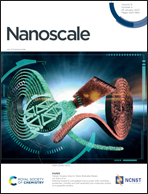Porous carbon-based metal-free monolayers towards highly stable and flexible wearable thermoelectrics and microelectronics†
Abstract
In the search for high mechanical strength and flexibility, ultrahigh semiconducting speed is crucial for the next generation of microelectronic and wearable electronics. Herein, we propose two 2D graphene-like macrocyclic complex carbon-based monolayers, namely g-MC-A and g-MC-B. Both monolayers are dynamically stable according to phonon dispersion and ab initio molecular dynamics simulations. The yield stress of these two layers reaches half that of graphene, revealing remarkably high mechanical strength. Besides, both monolayers are semiconductors. The electron mobility of g-MC-A is high: up to 104 cm2 V−1 s−1, comparable to black phosphorene. Furthermore, these two monolayers exhibit excellent inherent conductivity with anisotropic characteristics. Interestingly, an extra valley is observed near the conduction band edge for both layers, further simulation predicted both metal-free monolayers will exhibit ZT > 1, implying high thermoelectric performance. Therefore, these two C-based metal-free layers have promising applications in mechanical enhancement, microelectronics, wearable electronics and thermoelectric devices.

- This article is part of the themed collection: Nanoscale 2023 Emerging Investigators


 Please wait while we load your content...
Please wait while we load your content...